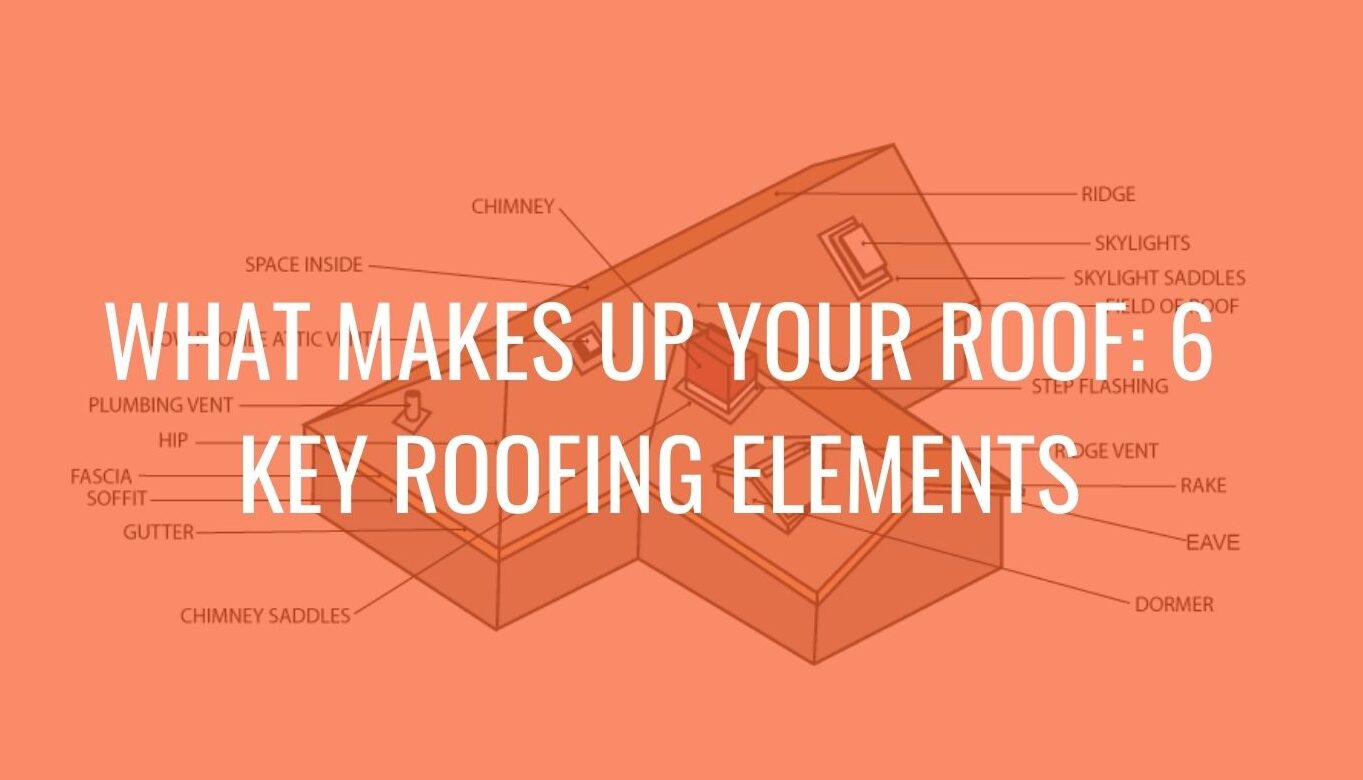What Makes Up Your Roof: 6 Key Roofing Elements
Maybe you’re just curious. Or maybe you want to gain some general knowledge about your roofing system.
If you are in the process of getting a roof replacement, you are going to need the understanding of different elements to your roof. When working with your roofer about something as expensive as a roof replacement, this knowledge will be important when discussing with your roofer.
On this page
(Click for a shortcut)

(Home Stratosphere)
Roof frame

Commonly referred to as the roof truss, the roof frame is what provides the base for all other roofing elements to rest on. This “skeleton” is added during the initial home construction, and oftentimes does not need to be replaced when getting a roof replacement, unless there is sufficient damage to require that. Like most things, there are construction codes on a local and national level for the construction of this frame.
Roof decking

After the roof frame is constructed, involved next in construction is the decking. It is a thin layer (less than 1/2″) of wood that could also be called sheathing. Typically, this is plywood or OSB (oriented strand board). This element of the roof will need inspection for rot as this would compromise the integrity of your roof. Alas, a homeowner won’t know how much will need replacement (if it does) until after the old roof is torn off.
Ice and water protectors

(BillRaganRoofing)
The ice and water protector is yet another layer that is established under the shingles. This is a thin sheet used to protect a roof from water and ice damage, specifically, where water is most likely to seep under the top layer.
Most importantly, this layer needs to be in places like valleys, edges, and roof features skylights, chimneys, etc…).
Underlayment

With a feeling similar to fabric, underlayment is typically made of asphalt-saturated felt or, becoming more popular, a synthetic option. This roofing element protects the decking and shingles from each other and is also the last defense against water damage for the decking.
Flashing

Roof flashing is a material (typically metal) that directs water away from crucial areas of the roof. Most commonly, it is located around roof features…
- Chimney
- Skylights
- Plumbing vents
- Roof vents
- Valleys
- Dormers
Shingles
Finally, the most familiar part of a roof, the shingles, are the roofing component that plays into the aesthetic of your home. Did you know that 80% of re-roofing projects in the US use asphalt shingles.
Shingles are made from tar-like material that fights rot, fire, and water. When shopping for the perfect shingles for your home, you have to consider the climate, weight, and lifespan of the product.
Other important roofing elements
Dormer: The protruding area of a roof containing a window.
Eave: The part of a roof that overhangs a wall.
Valley: the intersection of two sloping roofs joining at an angle to provide water runoff.
Hip: The intersection of two sloping roofs joining at an external angle.
Metal drip edge: A strip of noncorrosive material at the rake to facilitate water runoff.
Gable: The triangular section of the roof meeting the outer wall.
Rake: The outer edge of the roof that runs from the eave to the ridge.
Ridge: The highest point of a roof.
Ridge vent: An exhaust vent that allows warm humid air to escape an attic. Visit Owens Corning website to calculate your ventilation needs. Click here.
Under eave vent: An intake vent located under the eaves of a roof that help draw cool air into the attic. Visit Owens Corning website to calculate your ventilation needs. Click here.
Off-ridge exhaust vent: Individual exhaust vents usually located on the upper half of the roof that allow warm and humid air to escape the attic. Visit Owens Corning website to calculate your ventilation needs. Click here.
Square: A common roofing measurement. One square of roofing material is 100 sq feet.
Exposure: The part of each shingle that is exposed to the weather
***Pictured below: Dormer

Conclusion
Now that you’re comfortable with the essential roofing components of a roof, you will recognize valleys and hips around every corner. Most importantly, you now have a toolbelt of information in order to have a conversation with your roofer.
Call T-10 Construction today for a FREE inspection and estimate!






